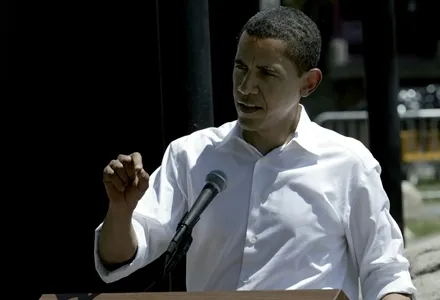The Australian National Road and Motorists Association (NRMA) has published a report highlighting a widening gap in national funds available for road maintenance, a gap which the motoring group says has already reached Aus $3.78 billion.
The association is calling on the Federal Government to allocate more fuel excise revenue to road projects, saying up to half of the current 38.1 cents per litre is required to fund the ‘black hole’.
July 4, 2014
Read time: 3 mins
The Australian National Road and Motorists Association (NRMA) has published a report highlighting a widening gap in national funds available for road maintenance, a gap which the motoring group says has already reached Aus $3.78 billion.
The association is calling on the Federal Government to allocate more fuel excise revenue to road projects, saying up to half of the current 38.1 cents per litre is required to fund the ‘black hole’.
According to The Motor Report, a specialist Australian website, “the NRMA says additional funding is required to bring basic council roads up to a ‘satisfactory condition’, which does not include provisions for future improvements.
Around 10 cents of the 38.1 cents per litre motorists currently pay in fuel excise is returned to roads, but the Federal Government outlined its intentions to increase this amount by returning to biannual fuel excise increases in the Federal Budget.
If the plan to increase the fuel excise is passed through the Senate the additional revenue will be tied to new road projects by law, but simple maintenance programs are not expected to benefit from the new tax.”
The new NRMA report “Funding Local Roads” contains figures from 152 New South Wales local councils, which reveal that they collectively need $911 million to fix the deteriorating roads in and around Sydney, plus a further $2.96 billion to fix the state’s regional roads.
“Liverpool Council in Sydney’s South-West required the most funding in metropolitan areas at $149.6 million, followed by Ku-Ring-Gai ($110.3 million) and Sutherland ($67.9 million),” says The Motor Report, and “the Mid-North Coast and North Coast areas combined account for 27.5 percent of the total backlog, while the Greater Taree area has a backlog of $260.1 million.”
"Some councils have no choice but to let bad roads get worse; the money is simply not there for them to fix roads within their boundaries," NRMA President Wendy Machin said. “It's not the local councils who are to blame as the money they're requesting isn't for glitz and glamour. It's for the basics including fixing pot holes, repainting faded lines and guttering.”
Also, Machin said, a series of bad floods in rural New South Wales has seen some councils allow previously sealed roads to return to dirt, due to a lack of funding. The report says the NSW road network is around 184,859km in length. Roads and Maritime Services (RMS) is responsible for 18,028km, plus 2,970km of far western rural roads where there is no local council. The RMS provides funding for councils to maintain 18,257km of roads with state significance, while the remaining 146,000km is managed by local councils.
The association is calling on the Federal Government to allocate more fuel excise revenue to road projects, saying up to half of the current 38.1 cents per litre is required to fund the ‘black hole’.
According to The Motor Report, a specialist Australian website, “the NRMA says additional funding is required to bring basic council roads up to a ‘satisfactory condition’, which does not include provisions for future improvements.
Around 10 cents of the 38.1 cents per litre motorists currently pay in fuel excise is returned to roads, but the Federal Government outlined its intentions to increase this amount by returning to biannual fuel excise increases in the Federal Budget.
If the plan to increase the fuel excise is passed through the Senate the additional revenue will be tied to new road projects by law, but simple maintenance programs are not expected to benefit from the new tax.”
The new NRMA report “Funding Local Roads” contains figures from 152 New South Wales local councils, which reveal that they collectively need $911 million to fix the deteriorating roads in and around Sydney, plus a further $2.96 billion to fix the state’s regional roads.
“Liverpool Council in Sydney’s South-West required the most funding in metropolitan areas at $149.6 million, followed by Ku-Ring-Gai ($110.3 million) and Sutherland ($67.9 million),” says The Motor Report, and “the Mid-North Coast and North Coast areas combined account for 27.5 percent of the total backlog, while the Greater Taree area has a backlog of $260.1 million.”
"Some councils have no choice but to let bad roads get worse; the money is simply not there for them to fix roads within their boundaries," NRMA President Wendy Machin said. “It's not the local councils who are to blame as the money they're requesting isn't for glitz and glamour. It's for the basics including fixing pot holes, repainting faded lines and guttering.”
Also, Machin said, a series of bad floods in rural New South Wales has seen some councils allow previously sealed roads to return to dirt, due to a lack of funding. The report says the NSW road network is around 184,859km in length. Roads and Maritime Services (RMS) is responsible for 18,028km, plus 2,970km of far western rural roads where there is no local council. The RMS provides funding for councils to maintain 18,257km of roads with state significance, while the remaining 146,000km is managed by local councils.









